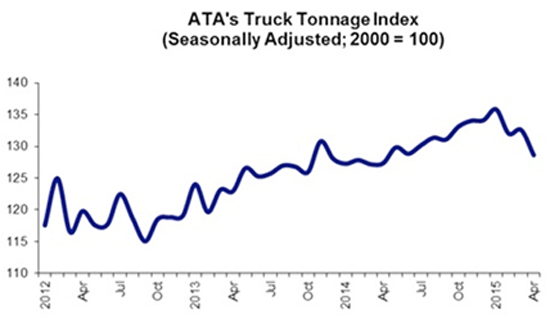Sinking Ships, Train Wrecks, and Empty Trucks: My Case Against Transportation Stocks
Tony Sagami
July 14, 2015
You can gnash your teeth over the Greek debt crisis or the Chinese stock meltdown, but one economic sure-thing you should be watching is the collapsing fundamentals of the transportation industry.
Check out this headline:
More problematic for the stock market is that the profit outlook for transportation stocks, particularly ocean shipping companies, is horrible.
The story was about container ships facing the business-killing environment of expenses exceeding revenues. According to the Wall Street Journal, the container-freight rates on the Asia-to-Europe route have sunk like rocks and are now below the cost of fuel. And that doesn’t even include all the other fixed and variable costs.
The Shanghai Containerized Freight Index—the cost of shipping a container from Shanghai to Rotterdam—fell to $243 per TEU (twenty foot equivalent unit), a new all-time low and below the cost of fuel, estimated to be $300 per TEU.
That’s right: For every container an Asia-to-Europe ship transports, it will lose $57. Ouch!
There are a lot more costs to operating a ship than just fuel, which is estimated to account for 40% of operating costs. Drewry Maritime Research estimates that the break-even rate for most container ships is $800 per TEU on that route.
Global demand is weak, but the real culprit is a massive increase in the number of container ships that have come online, mostly ULCSs (Ultra Large Container Ships).
Braemar ACM Shipbroking reported that the industry has added enough capacity to carry 500,000 containers in just the first quarter of 2015. To put that number in perspective, a total of one million containers were shipped in all of 2014!
That’s a 50% increase in capacity.
That supply is going to get even larger. There are backorders for 55 more container ships, 30 of them with a capacity of 18,000 TEU, 12 in the 10,000-11,000 TEU range, and 13 in the 1,400-4,000 TEU range.
Maersk Lines, the largest container shipping company in the world, ordered 11 ULCSs capable of carrying 19,600 TEU, with options for six more from South Korea’s Daewoo Shipbuilding & Marine Engineering.
“Unless by a miracle demand grows, we are up for heavy losses in the next quarter and maybe the rest of 2015,” moaned one industry executive.
Hey, this is exactly the type of misallocation of capital you see when the cost of money is taken down to zero.
This oversupply isn’t going to get worked off for years, and while the transportation industry is in trouble, the sickest part of the transportation food chain are the ocean-going shippers.
The Land-Based Transporters Aren’t Doing So Hot Either
Truck and rail are the dominant forms for moving freight in the United States and are crucial parts of the US economy. Billions of dollars of freight is transported across our nation’s highways and railroads every day. In fact, roughly 90% of the value of all goods moved in the US is transported by trucks and trains.
Especially by trucks. In 2014, trucks hauled just under 10 billion tons of freight and collected $700.4 billion, or 80% of total revenue earned by all transport modes.
That’s why I pay close attention to what the American Trucking Associations (ATA) has to say about the state of its industry, and according to the ATA, business isn’t very good.
The association reported that its For-Hire Truck Tonnage Index, which represents the actual tonnage hauled by trucks, fell 3% in April (most recent reporting period) and is definitely trending down.
“Like most economic indicators, truck tonnage was soft in April,” said ATA Chief Economist Bob Costello. Yes, the April numbers were down, but the above chart clearly shows that truck shipments have been down all of 2015.
There is no doubt in my mind that transportation stocks of all kinds are headed lower. As always, timing is everything—so don’t rush out and short a bunch of transportation stocks tomorrow morning.
Being bearish can pay big, though. To see how I’m playing the downtrends, check out my Rational Bear newsletter risk-free for 3 months.
It’s a good time to get started. I have several airlines, railroads, and trucking companies in my sight and expect to place bets against them—using puts or inverse ETFs—in the very near future.





0 comments:
Publicar un comentario